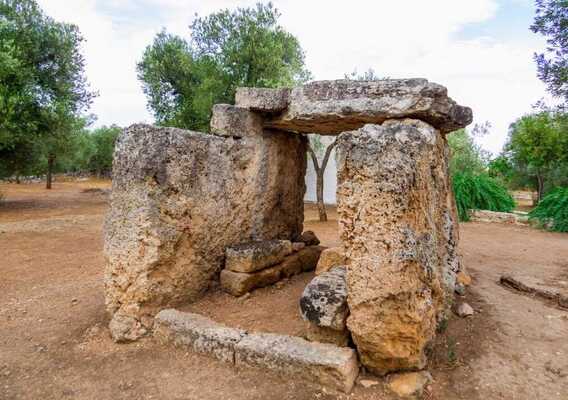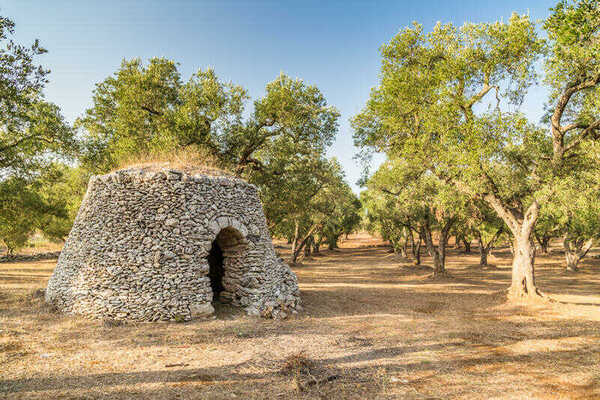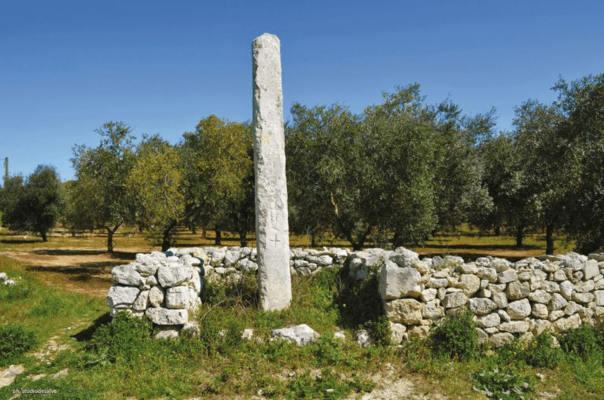Apulian capasoni
The Apulian capasoni, from the dialect term “capase” (i.e. capable), are yellow ocher or brown yellow clay containers of variable capacity (from a few liters up to 300) used in ancient times as containers for wine, extra virgin olive oil and water, due to their ability to keep the temperature inside them constant without the contents altering.

The Apulian capasoni: from containers to furnishing objects
- In the past, when cooperative cellars did not yet exist, the capasoni replaced the barrels and were used to contain the wine produced after the harvest but also solid foods such as dried figs, pickled mushrooms and pickled olives.
- The capasone was sealed with a clay plate fixed with a mixture of lime and ash (only in this way was it possible to avoid infiltrations from the outside).
- At the bottom, a small tap called “cannedda” or a cork called “pipolo” was fixed. After use, the capasone, in order to be used again, was washed with water and ground tuff with the aid of a brush. Above the latter were fixed tufts of myrtle, thyme and other fragrant essences.
For years, capasoni have also been used during the wine and oil trade in the Mediterranean.
Since the early 2000s, these traditional jars have also become a beautiful design object in great demand to decorate villas and gardens. There is no shortage of testimonies of capasoni even in luxurious resorts, even in America. In fact, this object can match perfectly in a garden as a flower vase or in a living room to give the room an atmosphere of times gone by.
The capasoni are distinguished from other containers such as the Sicilian jars which have a stockier and more capacious shape, from the Ligurian jar which has a lighter yellow colour, from the Tuscan jars which have a more reddish color and from the Umbrian jars which are lighter and tapered.

The Dolmens in Salento
It is difficult to explain the overwhelming love for this extraordinary place, a land made of landscapes, colors and mysteries: Salento which has very ancient, even prehistoric, roots. We start precisely from the 4th millennium BC. with the birth of the Dolmen in the Salento area.

The “Pajare” in Salento
The Pajare also called "caseddhi", but also "pagghiari" or "furni" are particular typical buildings present in Salento and are considered typically rural homes and built with the dry wall technique. Furthermore, they respect the standards of green building because the use of natural materials such as stone does not affect the environment, becoming a true engineering marvel.

The Menhirs in Salento
Silent witnesses of the first expressions of human feeling, of a past that did not yet know Messapic civilization, are the Menhirs scattered throughout Salento, whose origin and function remain shrouded in an aura of mystery.
